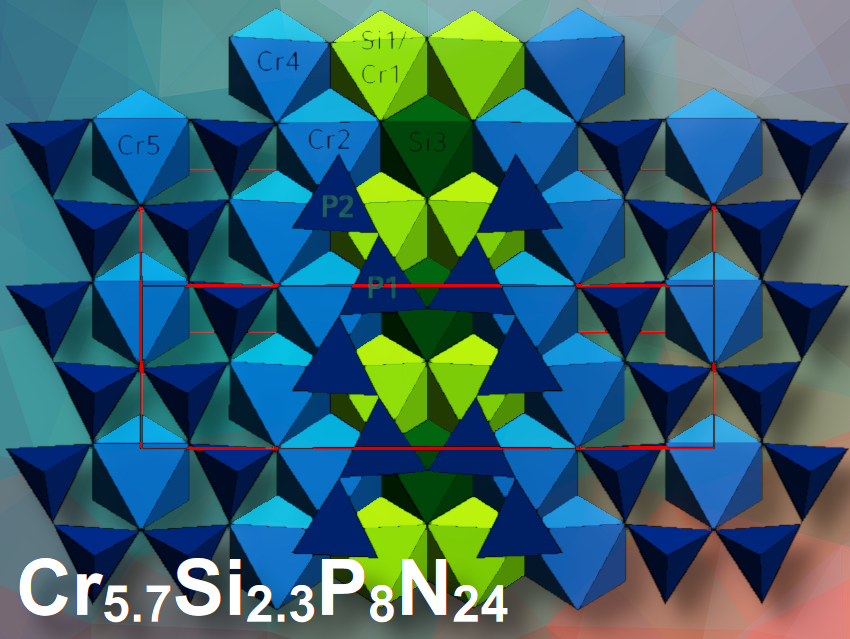Wolfgang Schnick, Ludwig-Maximilians-Universitat Munchen, Germany, and colleagues have introduced Cr5.7Si2.3P8N24 as the first nitridic analog of an amphibole mineral. The team synthesized the quaternary nitridosilicate phosphate using a mineralizer-assisted HP/HT (high-pressure, high-temperature) approach. In this method, the binary nitrides Cr2N, Si3N4, and P3N5 were subjected to conditions of 12 GPa and 1400 °C, with NH4F added as a mineralizing agent and NH4N3 used as an additional nitrogen source.
The reaction produces a stable red-brown microcrystalline powder that is resistant to air and moisture. The crystallites show a fiber-like structure with a length of up to at least 7 μm and a width of up to 2 μm. The crystal structure is refined in the monoclinic space group C2/m, with crystalstypically 2 to 3 μm in size.
The structure consists of vertex-sharing PN4-tetrahedra forming zweier double chains and edge-sharing (Si,Cr)-centered octahedra forming separated ribbons. The team confirmed separated Si and P sites and a disordered Si:Cr site, with Cr having an oxidation state of +IV. While Cr+IVO2 has been widely used in magnetic storage materials that dominate data storage in high-performance audio tapes, its presence in nitrides is novel.
The researchers think that the substitution of cation positions with transition and alkali metal ions is exciting to study to produce stable nitrides with interesting physical properties, such as band gaps suitable for semiconductor applications and ionic conductivity. In addition, the study of mixed anionic frameworks could shed light on their electronic structure and catalytic behavior, as similar substitutions have been observed in natural amphiboles.
- Cr5.7Si2.3P8N24 – A Chromium(+IV) Nitridosilicate Phosphate with Amphibole-Type Structure,
Monika M. Pointner, Katherine R. Fisher, Martin Weidemann, Florian Wolf, Jonathan Wright, Eleanor Lawrence Bright, Carlotta Giacobbe, Oliver Oeckler, Wolfgang Schnick,
Angew. Chem. Int. Ed. 2024.
https://doi.org/10.1002/anie.202401421



